Botanical name : Phaseolus vulgaris
Common names : Green bean, French bean, Butter bean, Pole bean, Climbing bean, Dwarf bean, Bush bean, Filet bean
Very easy for seed saving.
Lifecycle: Annual.
Pollination: Self. Flowers remain sealed so external pollination methods are excluded.
Mating system: Perfect flowers.
Suggested spacing: Same as for eating production.
Seed specific requirements: No specific requirements for seed production.
Isolation distance: 2 to 5 metres.
Population size: 5 to 10 plants recommended. A single plant will provide viable seed.
Seed maturity: Harvesting for seed may begin as soon as the pods change colour and become leathery. It may be more convenient to wait until they have dried to crackly, brown pods on the plant before harvesting.
Processing method: Break open dried pods to separate seed by hand. If the pods are completely dry, they can be threshed to break the pods and remove the seed. Sieving and winnowing will separate the threshed beans from the pods.
Expected seed viability: 3 years
Images
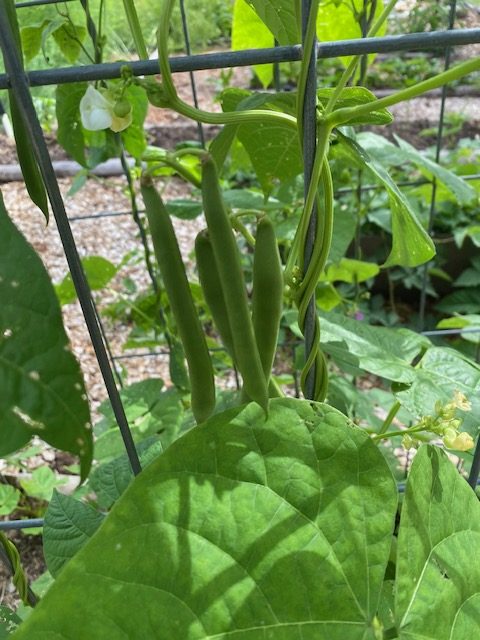
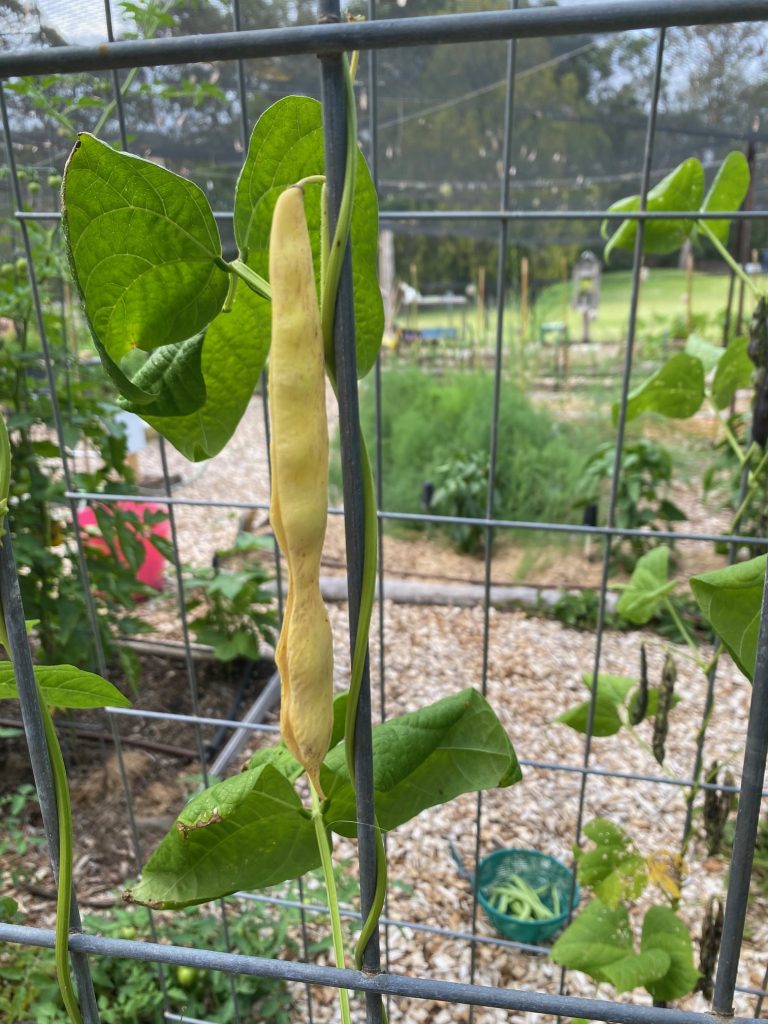
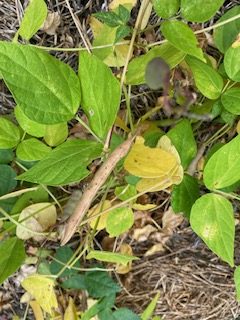
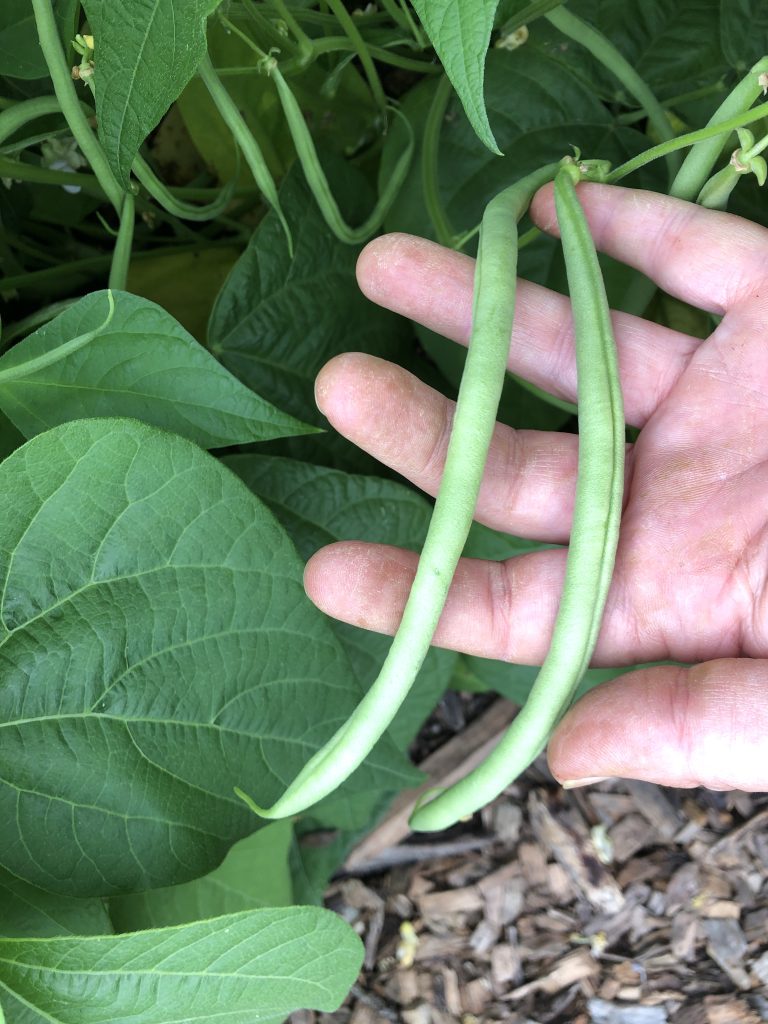

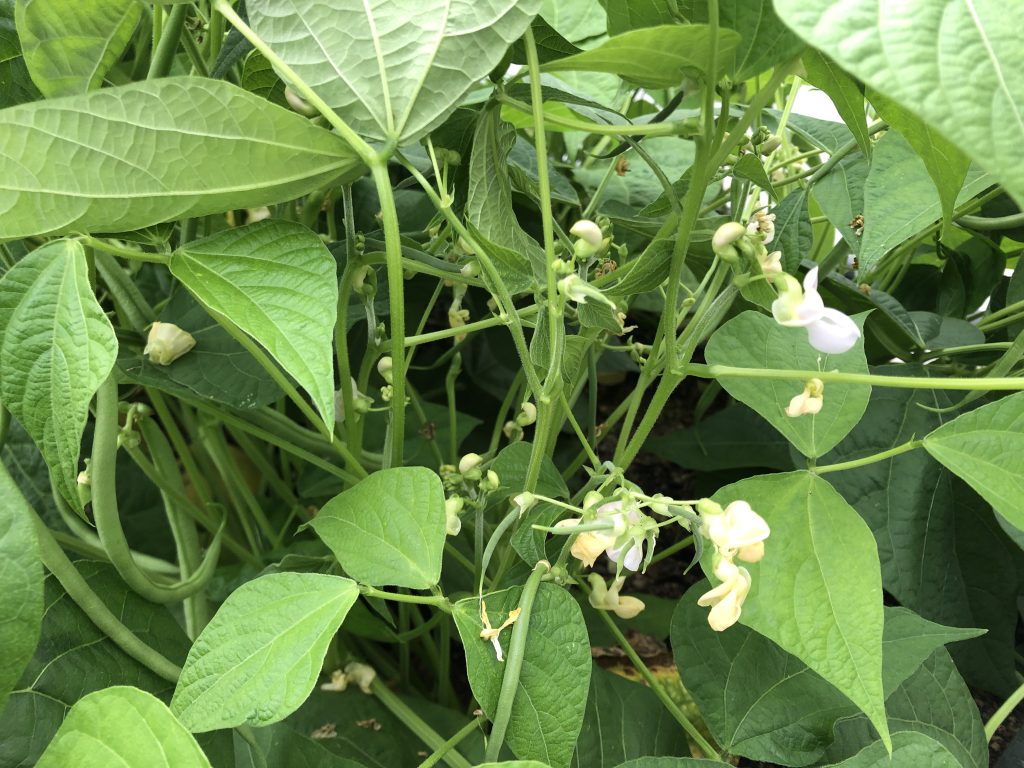
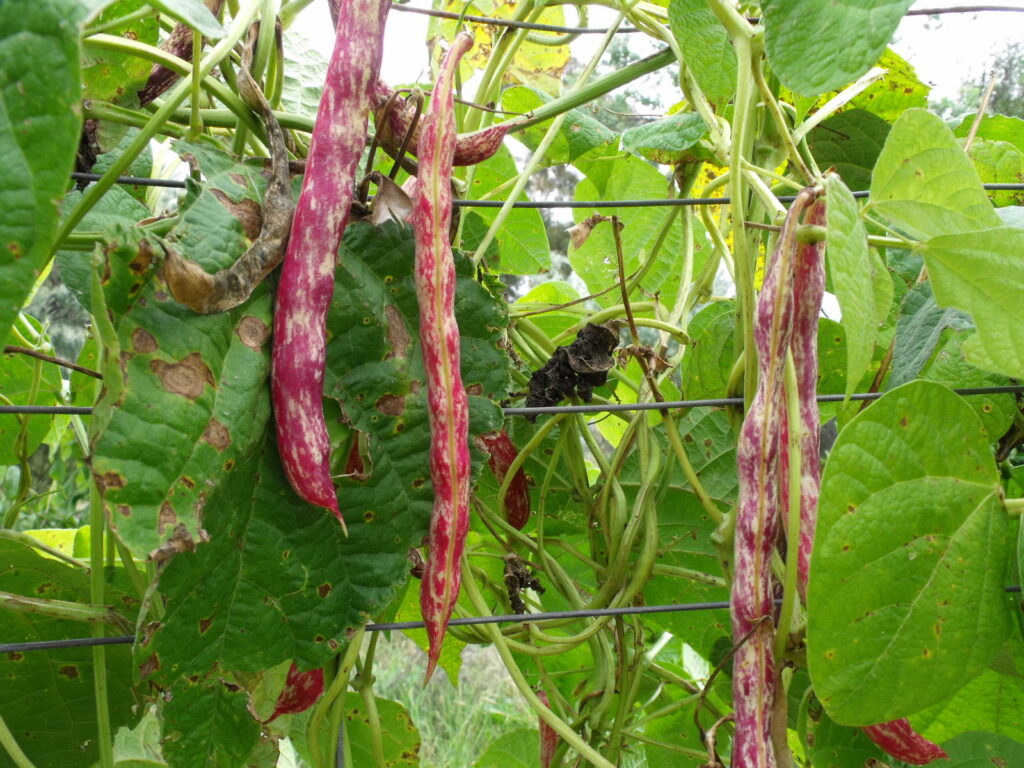

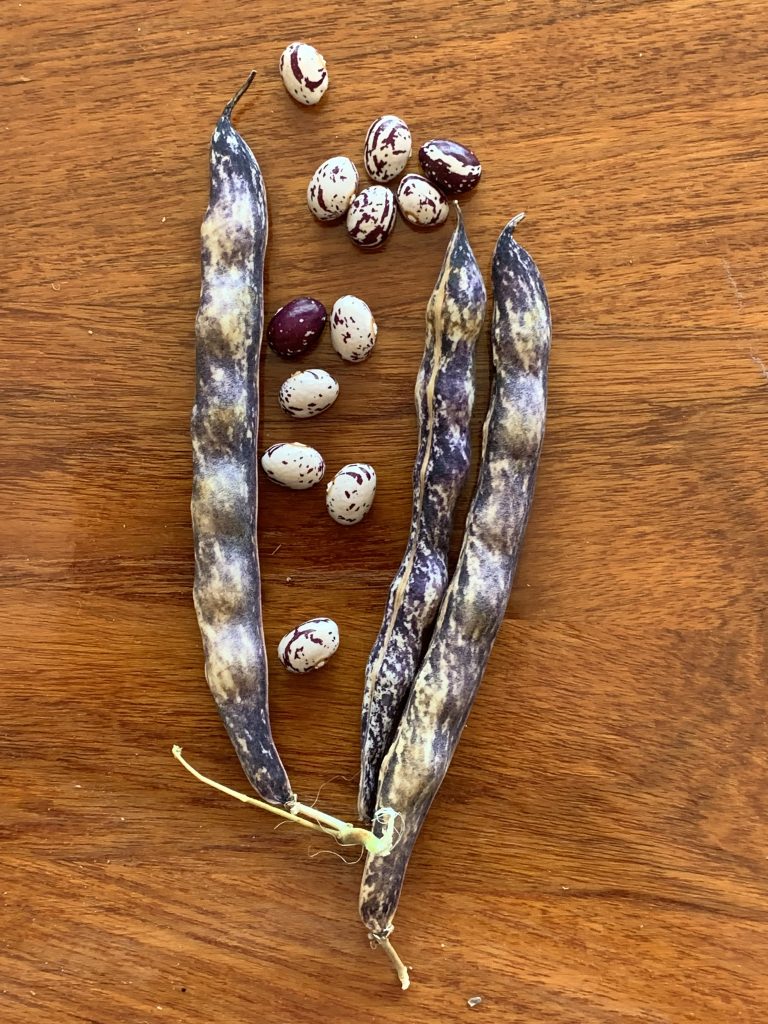
Cultivation
Common beans are not frost tolerant. They are also unlikely to grow well in high humidity and high temperatures. They are grown over summer in southern Australia.
They are available in both climbing and bush forms. Climbing varieties will need a trellis or some other type of support to grow up.
Growing for seed
For most of Australia, beans are very easy to grow for seed as they will come true-to-type without any effort on the part of the grower. Growers in Tasmania should be aware that bumblebees may physically cut through the flower petals to gain access to the nectar and so may be a pollination vector.
Keep plants far enough apart so that they cannot physically intermingle making identification of which plant mature pods belong to difficult. It is suggested that growers try to keep their bean varieties around 2 to 5 metres apart which also ensures ants and other insects that may cut or push their way into the flowers aren’t able to easily access nearby flowers and accidentally transfer pollen. There is a fairly low risk of this occurring, and growers can often achieve good results with no isolation at all.
Selection
Any plants showing disease should not have seed collected from them. Growing a number of plants of the one variety will also allow growers to inspect for any plants that vary from the desired traits and avoid saving seed from those plants.
Common beans come in a wide range of pod shapes and colours. Flower colours also vary. Growers should check that seed is being harvested from plants which are the correct plant form (flower colour; pod colour, shape and size; and seed colour and size) for what is expected for that variety. Plants that vary from the variety being conserved should not have seed collected from them. Variations aren’t often seen, but we should be aware that they can happen.
Harvest
The easiest way to identify when to harvest is to leave the pods on the plants until they have dried to crunchy, brown pods. If needed, pods can be harvested as soon as they change colour and the pods have gone leathery and flexible.
Bush or dwarf varieties can be harvested when most of the pods have dried off by cutting the entire plant and placing it on a tarp to finish drying. Climbing varieties will likely need each pod to be hand picked from the trellis as it becomes dry enough.
Be vigilant and collect any dried pods before rain. Once beans have dried on the plant, significant rain very easily causes mould to grow on the pods and seeds and these should not then be saved for replanting. If rain is forecast then pods should be collected at the leathery stage and dried under cover.
Processing
Once the pods are dry they can be broken open to get the seeds out. This can be done by hand for each pod. Alternatively the usual methods of walking on the pods or using a threshing machine can be tried. If the seed is dry it is difficult to damage it by threshing. Do not be tempted to try threshing or walking on the plant material before it is dried as the seed could be damaged while it is still moist and soft.
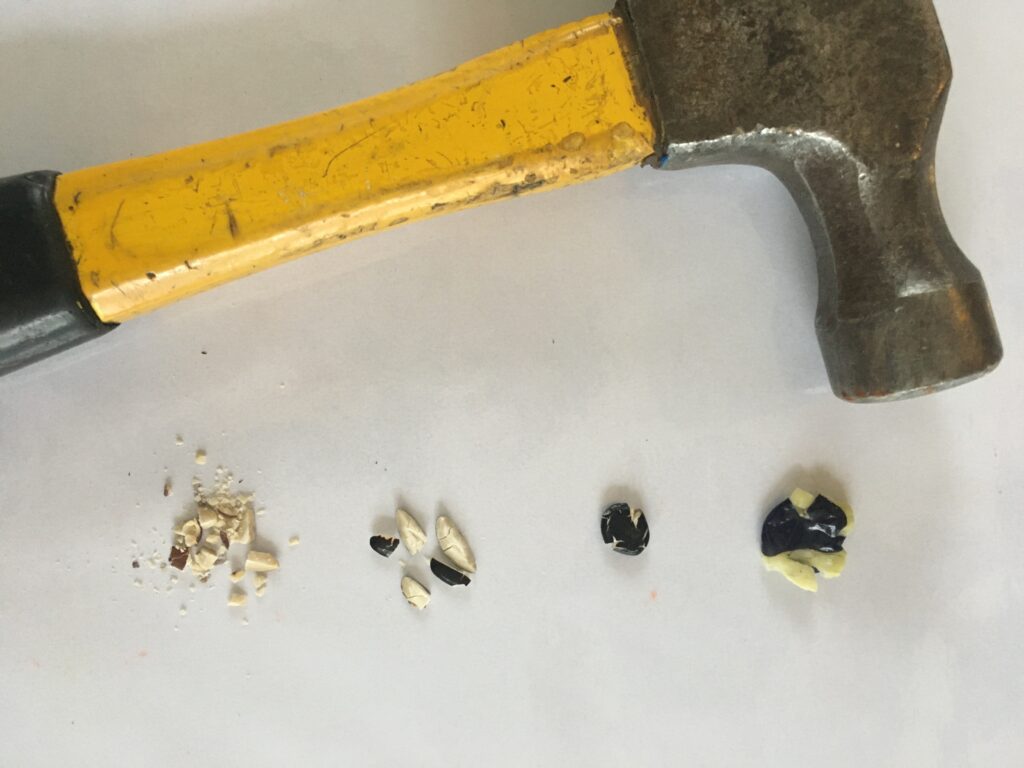
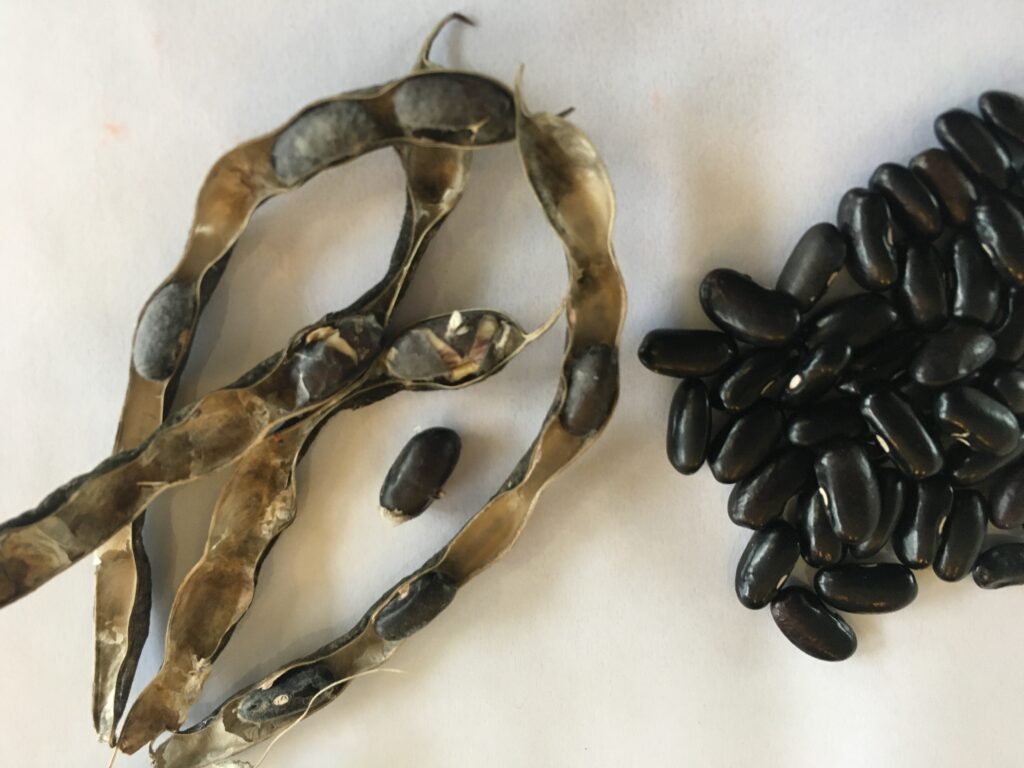
Storage
After processing, it is a good idea to keep the seed either spread out or in a paper bag in a dry location to ensure that any moisture being held in the seed has a chance to dry off. Beans are large seeds and can take a surprisingly long time to dry out fully internally.
Dryness can be tested by hitting a sample bean with a hammer. If it shatters it is dry enough, if it squashes at all then it is still holding moisture. Have a look at our video on dryness if you need more help with this part.
There is a fair likelihood that insect pests will have laid their eggs in or on the seed. To stop them in their tracks one of the easiest methods of control is to freeze the seed for a few days. To do this the seed must be absolutely dry first. Seed will also store for longer if it is fully dry. It then must be placed in an airtight container – like a glass jar – before going into the freezer for 48 to 72 hours to kill pests and their eggs.
Seed is best stored in an airtight container where it is dark, cool and dry.
Uses
Common beans are available in varieties intended to eat fresh and also varieties that have been selected for use as a dried bean (e.g. for the seed to be stored and later cooked to make baked beans etc).
Other Resources
Contributors
Liz Worth, Julie Davies
